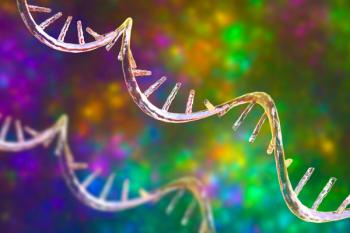
Novo Receives FDA 483 for Acquired Catalent Site
Key Takeaways
- FDA inspection revealed contamination and equipment issues at Novo Nordisk's Bloomington plant, acquired from Catalent in 2024.
- Contamination complaints included atypical particles like hair, with inadequate investigations and corrective actions noted by the FDA.
FDA cites Indiana drug plant for contamination, pest issues, and unresolved equipment failures, raising concerns over pharma manufacturing quality.
A recent FDA inspection has identified significant quality concerns at a Novo Nordisk pharmaceutical manufacturing plant in Bloomington, Indiana (1). The site, which was acquired in late 2024 through Novo Nordisk’s purchase of Catalent facilities (2), received an FDA Form 483 following findings of contamination and unresolved equipment problems.
Inspectors documented cases of “atypical extrinsic particles,” including cat and human hair in vial stoppers, along with pest infestations in classified areas (3). These observations were made between late June and mid-July 2025.
Unresolved contamination complaints and equipment failures
The plant, which produces therapies for Regeneron and Scholar Rock, has faced recurring complaints of contamination dating back several years. According to the FDA’s inspection report obtained by STAT, “Your investigation failed to determine a root cause for the contamination, assess the potential impact to the rest of the lot, or evaluate whether similar issues may have occurred in upstream batches” (4).
The report noted that the company’s review “was limited to a one-year time frame, and no complaints were assessed. Although components were considered a potential root cause, no corrective or preventative actions were taken to address this.” The agency added that since then, “approximately 20 additional deviations related to hair contamination during 100% manual visual inspection have occurred,” along with 14 deviations uncovered through a gap analysis.
Client concerns extend back to June 2022, when reports of “foreign matter” and “particles” were raised (1). In 2024 and 2025, roughly 10 work orders were logged for “recurrent leaks and other failures” in a key system, with some repairs delayed for extended periods.
Acquisition expanded US fill-finish capacity
The Bloomington facility became part of Novo Nordisk’s network in December 2024, when Novo Holdings completed its $16.5 billion purchase of Catalent’s operations (3). At the time, company leadership emphasized the importance of adding US fill-finish capacity to strengthen its supply chain for diabetes and obesity treatments.
“We are very pleased with the agreement to acquire the three Catalent manufacturing sites which will enable us to serve significantly more people living with diabetes and obesity in the future,” said Lars Fruergaard Jorgensen, president and CEO of Novo Nordisk, in the acquisition announcement (3). “The acquisition complements the significant investments we are already doing in active pharmaceutical ingredients facilities, and the sites will provide strategic flexibility to our existing supply network.”
Broader workforce shifts in gene therapy manufacturing
Separately, Catalent recently announced it will reduce its workforce by 350 employees at its Baltimore gene therapy site, citing changes in customer demand (5). “Our gene therapy business continues to see strong growth and we look forward to working on behalf of customers to deliver novel therapies for patients with genetic diseases/disorders,” a company spokesperson told Endpoints News. “It is never easy to see talented colleagues leave Catalent and we remain committed to providing them transition support as they manage this change.”
References
- Silverman E, Chen E.
Major US Drug Manufacturing Plant Did Not Properly Investigate Cat Hair, Pests, and Other Problems, FDA Finds . STATNews.com. August 21, 2025. - Saraceno, N.
Catalent to Lay Off 350 Workers at Baltimore Gene Therapy Plant . PharmaceuticalCommerce.com. August 20, 2025. - Manalac, T.
Novo-Acquired Catalent Plant Plagued by Unresolved Pest, Contamination Issues, FDA Finds . BioSpace.com. August 22, 2025. - FDA.
Novo Facility Inspection Report . Accessed August 25, 2025. - Saraceno, N.
Catalent to Lay Off 350 Workers at Baltimore Gene Therapy Plant . PharmaceuticalCommerce.com. August 20, 2025.
Newsletter
Stay at the forefront of biopharmaceutical innovation—subscribe to BioPharm International for expert insights on drug development, manufacturing, compliance, and more.




